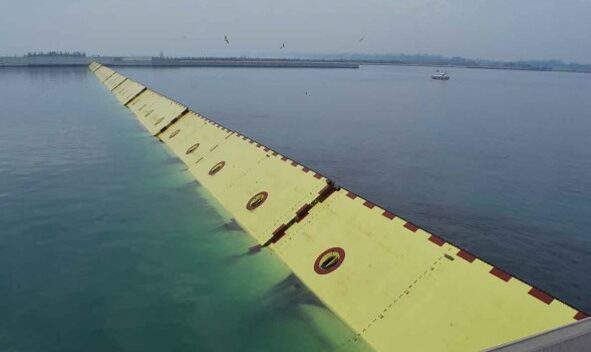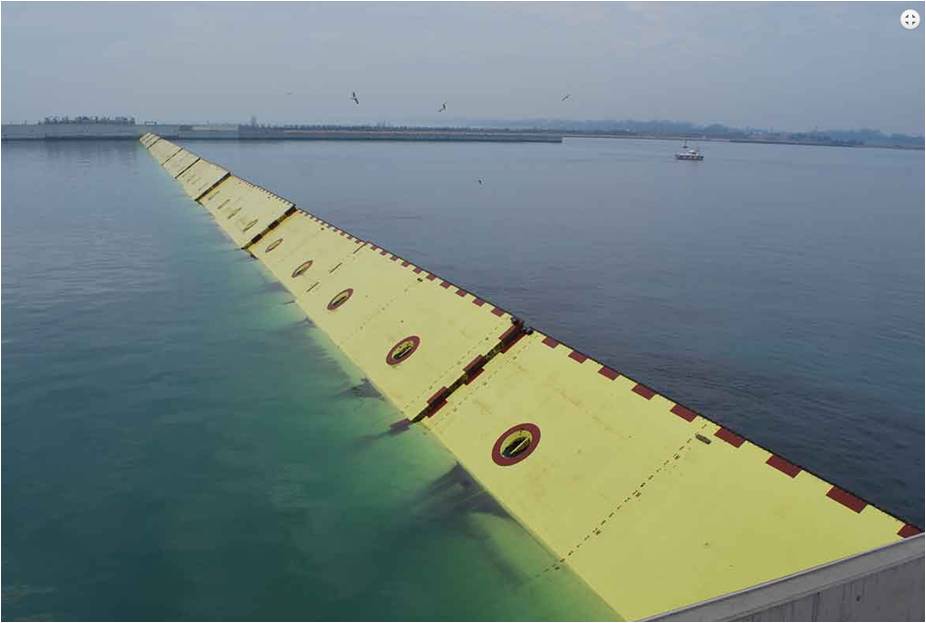Storm surge gates / flood barriers

Description
Storm surge gates/flood barriers are fixed installations that allow water to pass in normal conditions, and have gates or bulkheads that can be closed against storm surges or spring tides to prevent flooding. They are built to protect urban areas and infrastructure where storm surges and sea flooding could have major impacts. They can close the sea, mouth of a river or a waterway/channel. These barriers can be major infrastructure systems involving significant costs for construction and are often combined with other flood protection measures, such as dikes, seawalls and beach nourishment. Due to their expense and potential impacts, storm surge gates/flood barriers are relatively rare. Notable examples are those of Thames Barrier at the east side of the city of London, the Maeslantkering gate and Ijssel Barrier (The Netherlands), St. Petersburg (Russia), etc. In the Adriatic, the most famous example is the Venice Barriers (‘Mose’ system) which is the largest construction of this type, but also “Porte Vinciane” mobile barriers in the coastal area of Cesenatico. On Croatia’s coast such measures are inexistent at the moment mainly because the coast is protected with islands, and tides and oscillations are relatively small. However, a certain type of mobile barriers (along with other systems of de-salinizing freshwater) is under preparation in the Neretva Delta area to attenuate the salt water intrusion into the fertile soil of the area, but also salinization of freshwater that is normally used for irrigation.

Flap-gates of the MOSE barrier system in Venice (Photo: Consorzio Venezia Nuova)
Limiting factors of storm surge gates / flood barriers are:
- Relatively long time needed to close the barriers in case of emergency. Therefore, effective meteorological forecasting systems that predict storm and tidal surges is necessary. This depends on the system: Porte Vinciane are relatively fast to close.
- Risk of technical failure of the gate/barrier (e.g. barrier not closing properly).
- Timeframe issues – to what extent the barriers can remain viable in the face of future climate change and sea-level rise.
- Quite expensive projects combined with environmental impacts in the construction phase of the project.
- Maintenance to prevent siltation.
On the other hand, success factors can be:
- Existing gates and barriers have proven to be effective against storm surges.
- Very stable type of infrastructure.
- Storm gates/flood barriers can be used to regulate the seawater penetration into freshwater areas and the water level, providing eco-system services in this way. In this case they can be submerged (closing the deepest part of the hydraulic section only, because salt water moves in the deep layer).
Costs and benefits
The benefits of the storm surge gates/flood barriers are that they provide protection for settlements and infrastructure against storm surges and, at the same time, enable continued passage for shipping, fisheries and aquatic species (when not in operation). On the other hand, the projects for the storm gates/flood barriers can be expensive and harmful to the surrounding ecosystems of the project area while in the construction phase.
Implementation time and lifetime
The implementation time and lifetime of the storm surges gates/flood barriers depend on the future climate conditions and the area that the project will be made for. It is possible to design these structures in a way that bulkheads and levees are being elevated along with the sea level rise, but this should be considered in the earliest stages of the project.
On average, the implementation time for this adaptation option is more than 15 years, while for the expected lifetime it can differ significantly: from more than 25 years to 100 years.
Source for more detailed information
https://climate-adapt.eea.europa.eu/metadata/adaptation-options/storm-surge-gates-flood-barriers
PAP/RAC (2021) Handbook on coastal resilience for the Adriatic, INTERREG AdriAdapt project, Split.
